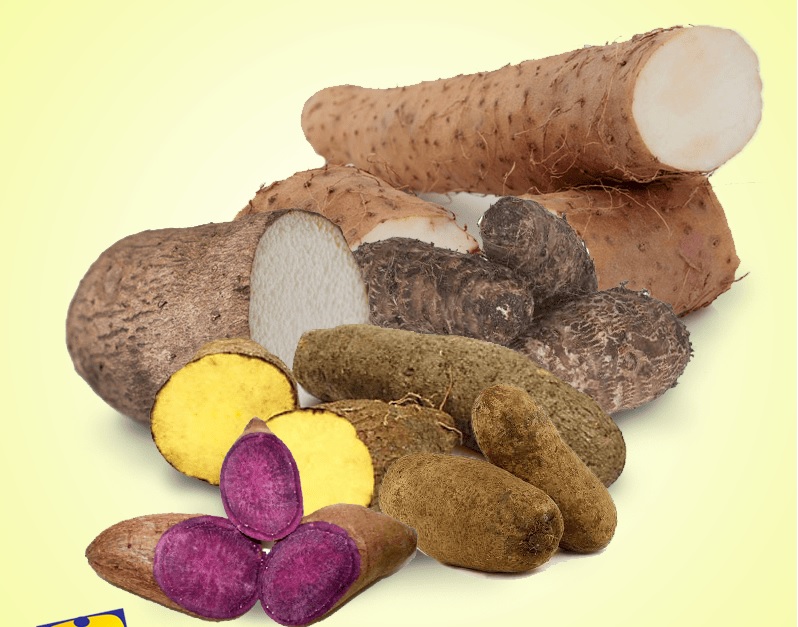Jamaican Yam: Nutritional Benefits and Cooking Tips
Jamaican yam is a staple in Jamaican cuisine, cherished for its versatility and rich, starchy flavor. This root vegetable, often referred to as Jamaican yellow yam, is similar to a sweet potato but has its own unique taste and texture.
Jamaican yam is packed with nutrients, making it both tasty and beneficial for your health.
Whether you’re looking to explore healthy Jamaican recipes or simply broaden your culinary horizons, Jamaican yam offers endless possibilities. You can boil it, fry it, or even use it in hearty stews. One popular dish is Jamaican Yellow Yam Stew, which combines the yam with spices and coconut milk for a delicious meal.
For those curious about how to prepare this root vegetable, learning to make classic dishes like boiled Jamaican yellow yam is a great start. This simple method brings out the yam’s natural flavors and makes it a perfect side for any meal.
History of Jamaican Yams
Jamaican yams have a rich history that touches on their African origins and the variety found on the island. They hold cultural significance and are celebrated in festivals.
Origins and Cultural Significance
Yams were brought to Jamaica by African slaves during the transatlantic slave trade. The starchy tuber was an important crop in Africa, often used in various dishes due to its nutritional value.
In Jamaica, yams quickly became a staple food. They were integral in providing sustenance and energy. The word “yam” comes from the African term “nayami,” which means “to eat.” This root vegetable played a crucial role in Jamaican cuisine and culture, symbolizing sustenance and resilience.
Today, the importance of yams is celebrated annually at the Yam Festival in Jamaica. This festival showcases the significance of yams in the country’s heritage while promoting unity and cultural pride.
Varieties of Yam in Jamaica
Jamaica is home to many different types of yams. These include Jamaican yellow yam, white yam, and St. Vincent yam. Each type has unique flavors, textures, and uses in cooking.
Jamaican yellow yam is particularly popular for its rich taste and firm texture. It’s often boiled and served alongside traditional dishes. Another variety, Pum-Pum yam, is celebrated for its sweetness.
The diversity of yams grown in Jamaica highlights the importance of this crop in the country’s agriculture. Trelawny, known as Jamaica’s Yam Belt, produces 80% of the island’s yams, playing a key role in its economy and export market.
Jamaica Yam Festival
The Trelawny Yam Festival is a major event held annually in Jamaica. It takes place in April, usually on Easter Monday, in Albert Town. Thousands of locals and tourists gather to celebrate the yam, one of Jamaica’s most beloved crops.
Activities at the festival include:
- Yam By: A competition where chefs showcase their best yam dishes.
- Live Music: Featuring local bands and artists.
- Cultural Performances: Including traditional dances and storytelling.
Yams are a staple in Jamaican cuisine. At the festival, you can taste various yam dishes, from yam pies to yam soups. The creativity of the dishes highlights the versatility of yam in cooking.
The festival also honors notable figures associated with yams. One famous person linked to the yam is Violet Moss Brown, a super centenarian from Duanvale, Trelawny, who credited yams for her long life.
Additionally, the festival has an impact on tourism. It attracts many visitors each year who are eager to experience authentic Jamaican culture. This event not only celebrates yams but also supports local farmers and boosts the local economy.
The Trelawny Yam Festival remains a testament to the cultural and dietary significance of yams in Jamaica.
Cultivation and Uses
Jamaican yam, including varieties like the yellow yam, is central to both agriculture and cuisine. Its cultivation involves specific practices tailored to the island’s climate, while its culinary use is versatile, appearing in many traditional dishes.
Agricultural Practices
Jamaican yam thrives in tropical climates with well-drained soil. Farmers typically plant yam vines from tuber pieces, known as “setts,” in mounds or ridges to improve drainage. Regular weeding and mulching are essential to keep soil moisture and control weeds.
Fertilizers rich in nitrogen, phosphorus, and potassium promote healthy growth. Farmers often use organic matter such as compost or manure to enrich the soil. Yams take about 6 to 10 months to mature, depending on the variety, with yellow yam being a popular and hardy option.
Culinary Applications
Jamaican yam is a staple in the local diet and is often boiled, roasted, or baked. It is used in soups, stews, and as a side dish. The texture is starchy and firm, which makes it ideal for absorbing flavors in savory dishes.
Boiled yam is a common breakfast item, often served with ackee and saltfish, a national dish. The yam’s versatility also allows it to be mashed or fried, providing various textures and flavors in Jamaican cuisine.
Jamaican Yam Recipes
There are many beloved recipes featuring Jamaican yam. One popular dish is yam and saltfish fritters, where boiled yam is mashed and mixed with saltfish, peppers, and spices before being fried. Another favorite is yam pudding, made by grating yam and mixing it with coconut milk, spices, and sweeteners, then baking it to create a rich, sweet dessert.
For a savory option, yam soup combines yam with chicken or beef broth, vegetables, and seasonings, slow-cooked until tender. These recipes highlight the yam’s ability to be both a main ingredient and a complementary addition to a variety of meals.
By cultivating Jamaican yam using traditional agricultural methods and incorporating it into diverse recipes, you can appreciate its importance in Jamaican culture and cuisine.
